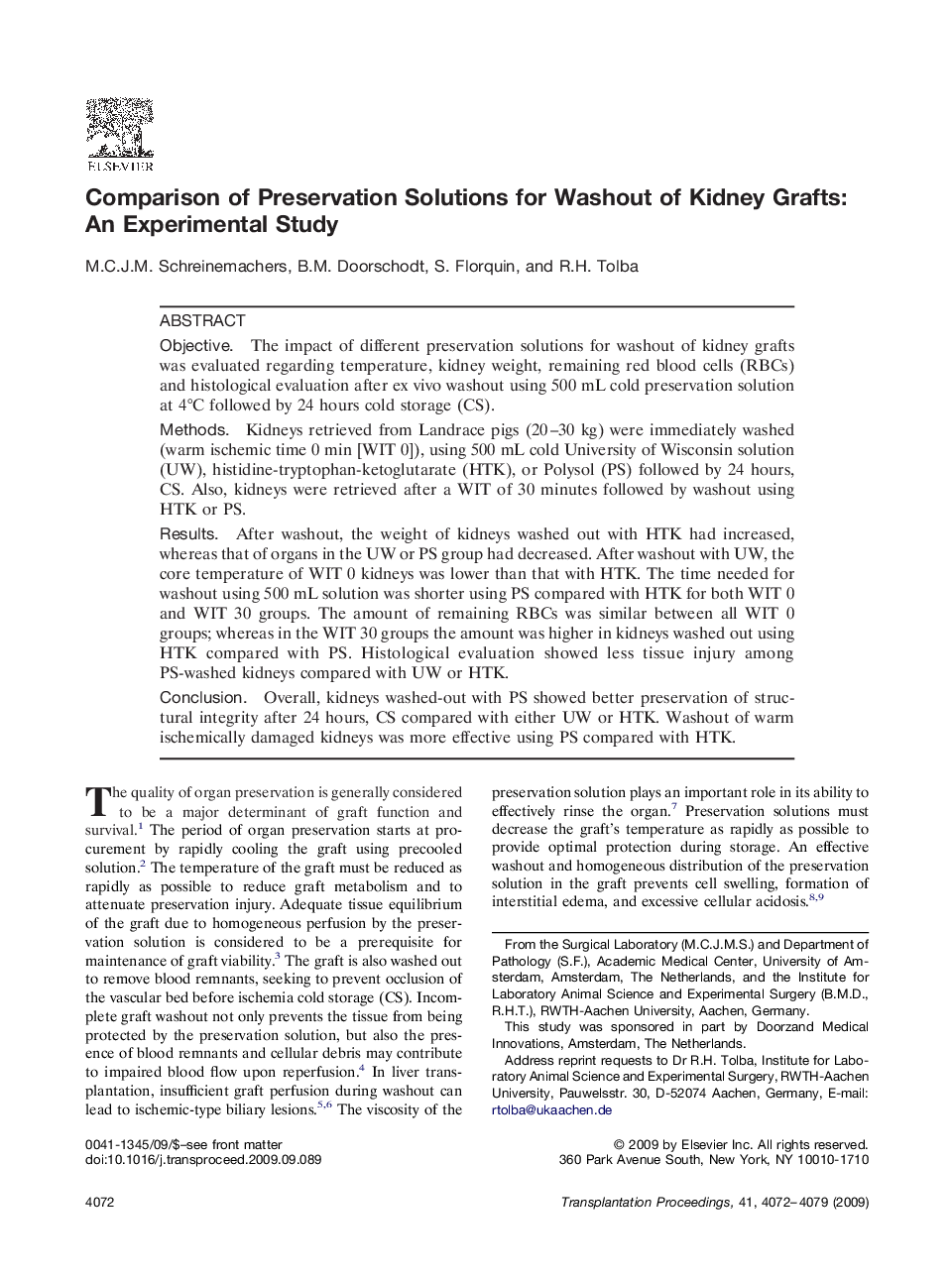| Article ID | Journal | Published Year | Pages | File Type |
|---|---|---|---|---|
| 4258463 | Transplantation Proceedings | 2009 | 8 Pages |
ObjectiveThe impact of different preservation solutions for washout of kidney grafts was evaluated regarding temperature, kidney weight, remaining red blood cells (RBCs) and histological evaluation after ex vivo washout using 500 mL cold preservation solution at 4°C followed by 24 hours cold storage (CS).MethodsKidneys retrieved from Landrace pigs (20–30 kg) were immediately washed (warm ischemic time 0 min [WIT 0]), using 500 mL cold University of Wisconsin solution (UW), histidine-tryptophan-ketoglutarate (HTK), or Polysol (PS) followed by 24 hours, CS. Also, kidneys were retrieved after a WIT of 30 minutes followed by washout using HTK or PS.ResultsAfter washout, the weight of kidneys washed out with HTK had increased, whereas that of organs in the UW or PS group had decreased. After washout with UW, the core temperature of WIT 0 kidneys was lower than that with HTK. The time needed for washout using 500 mL solution was shorter using PS compared with HTK for both WIT 0 and WIT 30 groups. The amount of remaining RBCs was similar between all WIT 0 groups; whereas in the WIT 30 groups the amount was higher in kidneys washed out using HTK compared with PS. Histological evaluation showed less tissue injury among PS-washed kidneys compared with UW or HTK.ConclusionOverall, kidneys washed-out with PS showed better preservation of structural integrity after 24 hours, CS compared with either UW or HTK. Washout of warm ischemically damaged kidneys was more effective using PS compared with HTK.
